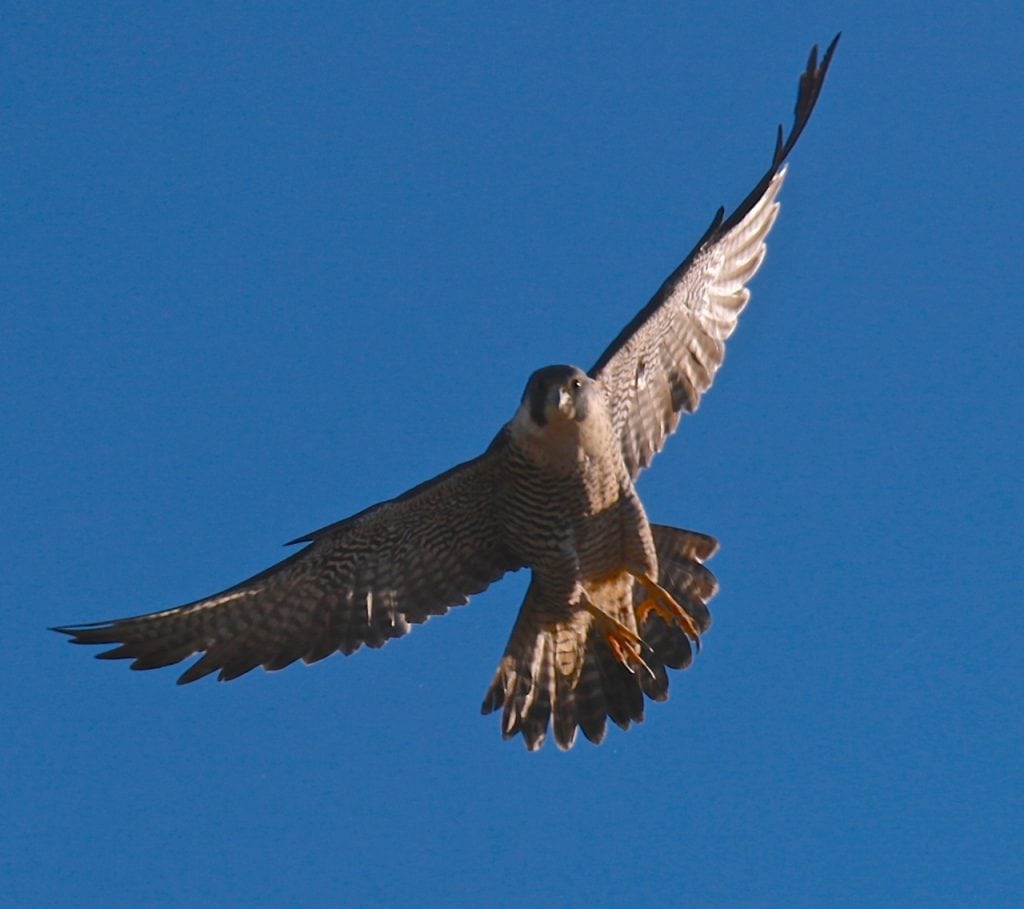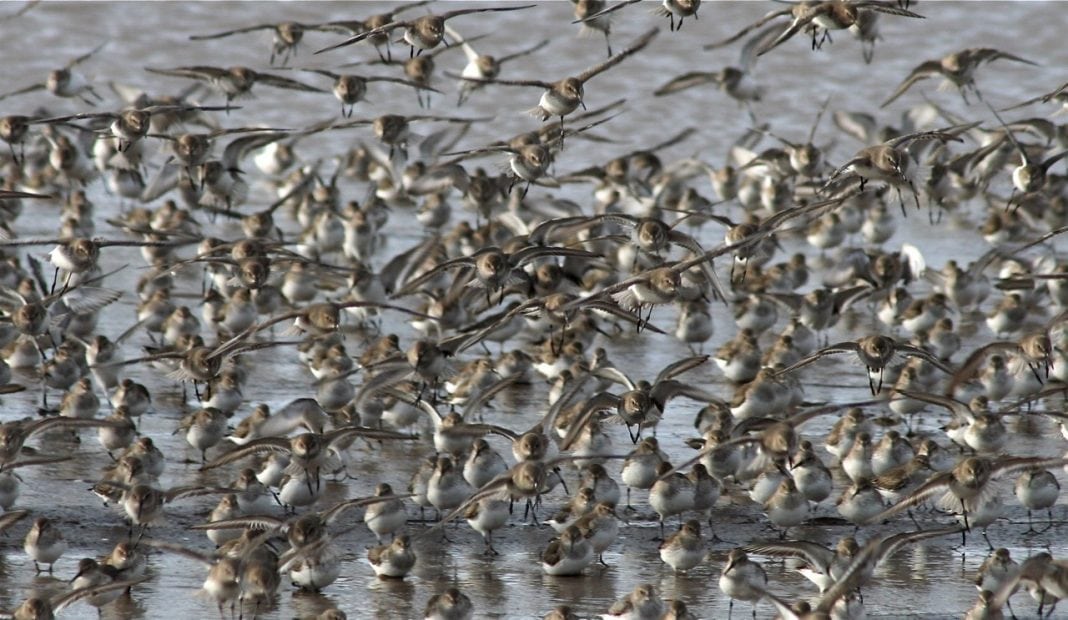Hundreds of thousands of visitors from around the world are currently making their way to our shores, and many are already here. During the end of April and throughout the month of May, Grays Harbor transforms into the center of the universe for roughly a quarter of a million shorebirds. These seasonal visitors are making their annual migration from South America, following the warm weather and food sources that come from more direct sunlight. Some of these birds travel over 15,000 miles, making a quick stop in our backyard before continuing their journey north. Each year, the return marks the unofficial start of spring, celebrated by Grays Harbor’s annual Shorebird Festival. Bringing in birders and nature lovers from around the nation, witnessing the great shorebird migration is yet another unique and amazing part of living in Grays Harbor.
 The return of the shorebirds is a truly awesome thing. While the migrations numbers continue to decrease, as is the case with nearly all bird species over the past few decades, the amount of birds that return is still quite impressive. As the dozens of species of shorebirds wander the beach or fly in groups that look like quick, dark clouds, you’ll have a chance to witness a timeless experience along our shores. The shorebird migration has been occurring for countless generations, and it is important that we share incredible events like this with our families. The bonding that comes from a day out is irreplaceable, as are the sights you may witness while watching the great shorebird migration.
The return of the shorebirds is a truly awesome thing. While the migrations numbers continue to decrease, as is the case with nearly all bird species over the past few decades, the amount of birds that return is still quite impressive. As the dozens of species of shorebirds wander the beach or fly in groups that look like quick, dark clouds, you’ll have a chance to witness a timeless experience along our shores. The shorebird migration has been occurring for countless generations, and it is important that we share incredible events like this with our families. The bonding that comes from a day out is irreplaceable, as are the sights you may witness while watching the great shorebird migration.
While shorebirds get a majority of the attention during this great migration, they aren’t the only awesome thing in the skies. Their arrival brings in the fastest flying bird on earth, the Peregrine falcon. Once nearly extinct, seeing these falcons in action is one of the most incredible things you’ll ever see a bird do. As the Peregrine soars above the birds, the shorebirds group together and fly in huge flocks, twisting and turning in unison. Using its incredible speed, the Peregrine falcon will shoot toward the birds, traveling at around 200 miles per hour. With a flash of color and a poof of feathers, a single shorebird will be caught mid-flight, wrapped in the sharps, strong talons of the speedy Peregrine, now flying away with a great meal. Other raptors will be in the area during this time, also looking for easy meals, so keep an eye open for eagles, red tail hawks, osprey and more!

While many will think that they can just pop down whenever they want and take a good look at the shorebirds, those who want to have the best viewing experience need to plan their trip to the coast around high tide. The absolute best time to see shorebirds is a four-hour window on either side of high tide. During the two hours before and after high tide, the shorebirds will be closer to the viewing areas and more concentrated, giving you much better sightings. While nearly any sandy place along the coast may grant you shorebird views, there are a handful of best places to see shorebirds this spring around Grays Harbor.
The highlight for many is the bird viewing that occurs right near Hoquaim at the Grays Harbor Wildlife Refuge. Here, along a family-friendly path, you’ll witness the shorebird migration in full glory. The tidal flats at the refuge are ideal for shorebirds, giving them plenty of space to hang out during low tide, and a less exposed shoreline during high tide. Bring a pair of binoculars, some warm clothes and patience, and a trip to the Grays Harbor Wildlife Refuge may reward you with once in a lifetime birding experiences.
Along the coast, the shorebird migration is equally stunning, especially at Damon Point in Ocean Shores. Hiking the four mile round trip trail around this sandy spit, you’ll see great groups of shorebirds along the shoreline, as well as 60 species of birds, including eagles, hawks and maybe even pelicans. Wild and beautiful, seeing the shorebird migration from Damon Point makes for yet another memorable experience in Grays Harbor, with thousands of birds and stellar ocean and mountain views. Just north of Ocean Shores, the beaches at Griffiths-Priday State Park, leading to the mouth of the Copalis River, will grant you more bird views while having a fun day on the beach.

Along the southern shores of Grays Harbor, the bird watching is just as great. Located just south of Grayland Beach State Park, the beach access area near Midway Beach Road is a popular spot for shorebirds migrating through the region. In the spring months, there will be over twenty species of shorebirds in this area, highlighted by the “Streaked” Horned Larks and Lapland Longspurs that frequent this stretch of beach. With eagles constantly flying around and the occasional blue heron sighting, Midway Beach is a fun place to avoid the more crowded parks and have a great time birding.
For a full day of driving and birding, it is recommended you hit up the Westport loop, touching all the birding hotspots in one trip. Starting with the Westport (South) Jetty, make your way back to the Johns River Wildlife Area, ending at Bottle Beach State Park (including its ADA accessible Washington State Birding Trail offering more than 130 bird species). The tidal flats make for a fun day of watching for wildlife of all shapes and sizes, as well as watching shorebirds, eagles, herons and more from the comfort of your car.
Featured photo credit: Douglas Scott












































